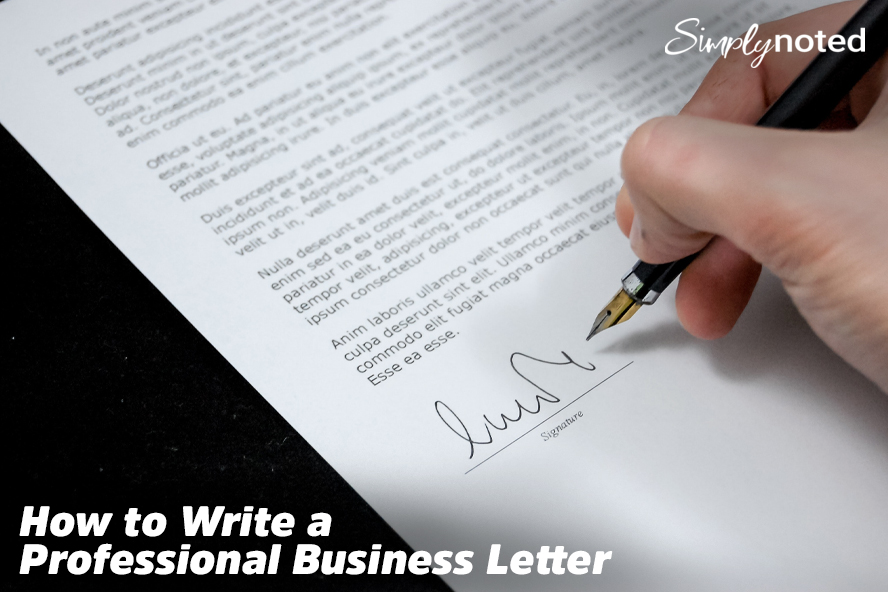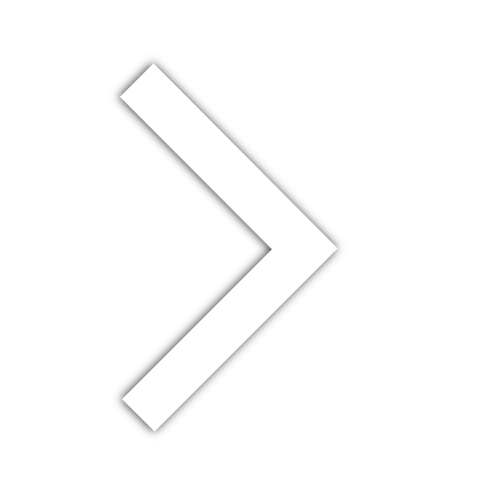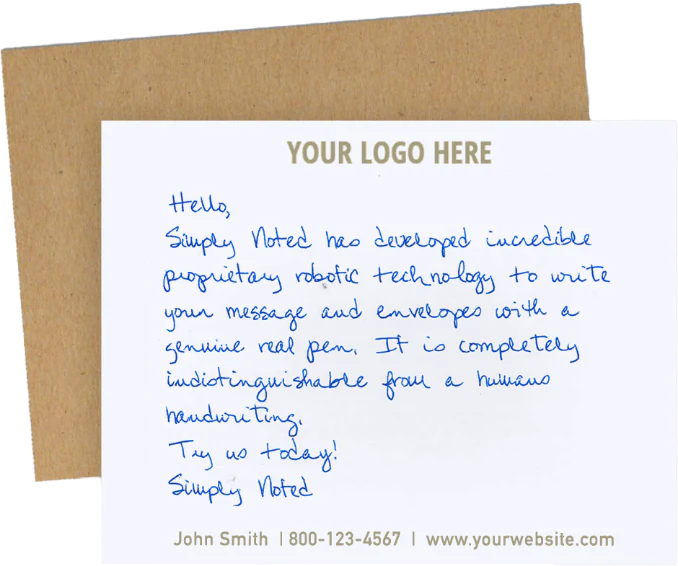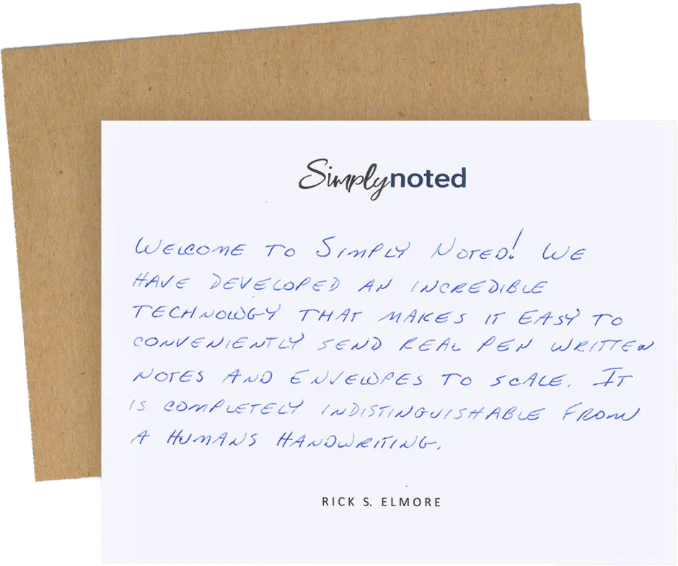How to Write a Professional Business Letter

Emails have replaced business letters in many areas of our professional lives, but sometimes this digital format is a poor substitute for the real thing. Emails and other instant communication methods lack a real, typewritten letter's poise, style, and physicality. When you need to make a point or convey critical information, a professional business letter — the standard of a fading age — is still the best choice.
However, because letters have slipped from prominence, many people have either forgotten proper formatting or never learned it to start. To have your professional business letter taken seriously, you need to understand what’s involved and consider best practices. This article will discuss the best way to format your business letters and give you some tips and tricks to expedite their creation.
You’ll also learn how you can send handwritten letters as quickly and as easily as an email. Let’s get started.
SEE ALSO: Written Letters Done For You | 5 Reasons to Let Us Write Your Letters
FORMATTING YOUR PROFESSIONAL BUSINESS LETTER
Business letters are formal documents. Before you begin composing, you need an understanding of proper formatting. When you write a letter using an arbitrary layout, it loses its gloss of professionalism. Instead, it looks random and haphazard, better suited to personal communication than a business environment.
Professional business letters are composed using block style employing uniform 1-inch margins. Block style ensures that all text elements are justified left. Then the content is divided into discrete sections. Each line is single-spaced, with a double space between elements. Your font choice should be something standard, like Times New Roman or Arial, rendered in 12 pt size. The sections break down like this:

Sender’s Address
Begin your letter with your address. Your business name and address are enough. Optionally, you can add your name. This section lets the reader know who sent the communication.
If your stationery already includes letterhead, you can skip this section. You don’t want to waste time and space with redundant information.
date
Add the date you’re sending the letter next. Standard date formatting applies here. For example, you would write, “January 1, 2022,” or whatever the standard is for your country.
Recipient’s Name and Address
Your recipient’s address information comes next. Unlike the sender’s address, the recipient’s name isn’t optional. You should always include it at the top of their address.
salutation
The addresses and dates set up your letter, and the salutation begins the content portion. It welcomes your reader. Start with “Dear” followed by your recipient’s first and last name.
It’s standard etiquette to append “Mr.”, “Ms.”, or “Mrs.” depending on the recipient’s gender and marital status. However, this convention is fading in importance. You can often omit this qualifier, particularly if you're unsure which to use.
If you don’t know your recipient’s name, avoid generic salutations like “To whom it may concern.” These lack personalization and ring hollow. Try instead to gather some kind of descriptive information, like a job title. You might say, “Dear Marketing Manager” or something similar.
It’s also important to place a colon at the end. Commas are the more familiar punctuation, but this is only used for personal correspondence.
body
The body contains the meat of your communication. It’s customary to introduce yourself in the first paragraph and state the reason for your letter. Across the following few paragraphs, you’ll discuss your points in greater detail. Your closing paragraph should sum up your main points and include a call to action if you require some behavior from the reader.
closing
Your letter’s now complete, so you’ll sign off with a closing phrase. A formal closing like “Sincerely” or “With appreciation” is preferred for the lion's share of professional business letters. More casual closings like “Cheers!” or “Take care!” should only be used when you know the recipient well. Unlike your salutation, which uses a colon, a comma should finish your closing.
Signature Line
After your closing, skip four lines to allow room to sign your letter after printing. Type your name, job title, and other pertinent contact information, like your phone number and email address.
Enclosures
You should note in this section any documents you’re including. This small flourish guarantees that your recipient will know there was something else for them to view even if the enclosure gets separated from the letter.
SEE ALSO: How to Write an Opening to a Letter

TIPS FOR WRITING MORE EFFECTIVE BUSINESS LETTERS
Proper formatting will get you pretty far. Use these tips to add an extra gloss of professionalism.
Keep It Focused and Succinct
There’s no room for fluff in a professional business letter. You should be clear about what you’re writing and attempt to use as few words as possible. Get straight to your points and keep the reader focused on what’s important. Leave the flowery words and extended prose to your personal correspondence. Business letters should mean business.
Be Persuasive
Unless your intent is only to inform, you’re likely writing to prompt a response from your recipient. Use persuasive language with clear arguments to convince your reader that they should take your desired action — and sooner rather than later.
SEE ALSO: 4 Formal Business Letter Samples

Don’t Be Passive — Use the Active Voice
Inexperienced writers often use the passive voice because they think it sounds more interesting, but all they accomplish is weakening their prose and confusing their readers. With professional business letters, you should always use the active voice. If you find a significant amount of passive voice in your writing, try reworking your sentences.
The active voice presents the sentence’s subject as the thing taking the action expressed by the verb. With the passive voice, the subject is instead the thing being acted on by the verb’s action. Because the active voice has the subject acting, not being acted on, the active voice sounds more confident and assertive. Here’s an example:
Active voice: Jeremy kicked the ball.
Passive voice: The ball was kicked by Jeremy.
You can see how the subject of the first sentence, Jeremy, actively kicked the ball, while the subject of the second sentence, the ball, was kicked. The subject in the second example has the action passively happening to it.
With these tips and the proper formatting, you have everything you need to create a professional business letter. And soon, you can get those letters handwritten without any work. This year Simply Noted is adding handwritten letters to its offerings — fully automated, handwritten business letters created using real ink pens. They’re the next best thing to handwriting them yourself!
SEE ALSO: 5 Best Business Letter Salutations























